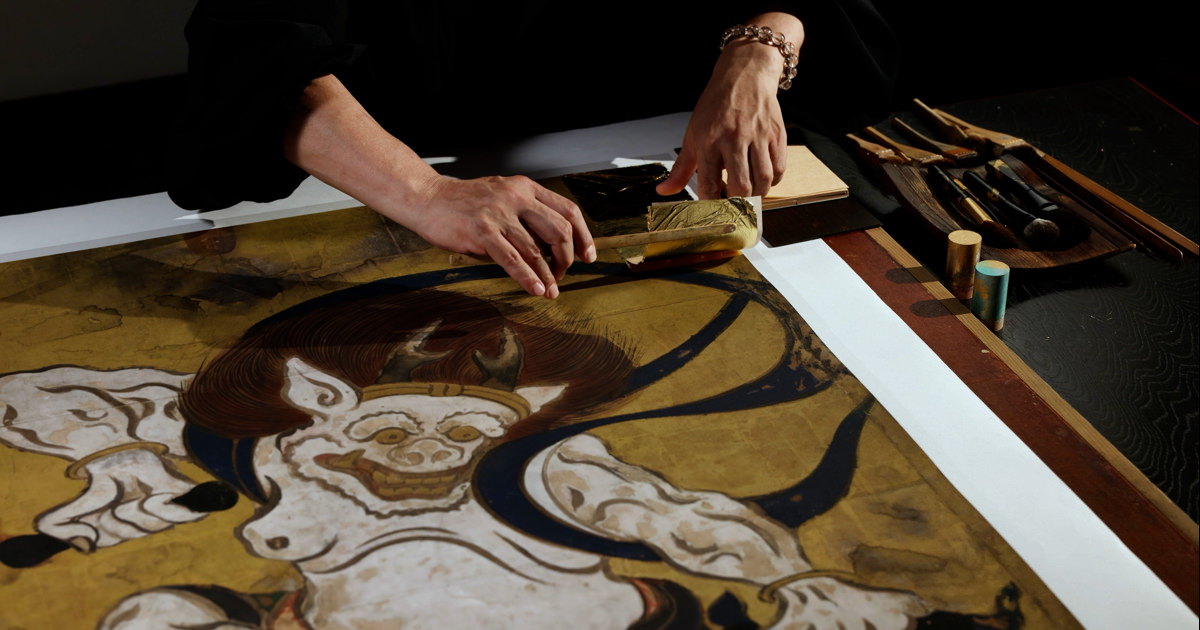©The Trustees of the British Museum (2017).
These images are based on the high resolution facsimile produced by the Tsuzuri Project. Unauthorized copying, duplication, or transfer of these images is strictly prohibited.
Birds and Flowers of Autumn and Winter
High-resolution facsimiles
- Material
- printed, sprinkled gold on washi paper
- Period of creation
- Tsuzuri Project Stage 11 2017–2018
- Recipient
- Tanzan Shrine
Original
- Artist
- Kano school
- Historical era
- Edo (17th century)
- Material
- ink, color, and sprinkled gold on washi paper
- Medium
- Four sliding doors
- Size
- Each door H173.5 × W141.0 cm
- Collection
- British Museum
Description
On four broad sliding-door panels sprinkled with ornamental gold and silver dust as well as finely cut foil, birds and flowers full of vitality are richly drawn. On the left side, there are wild geese playing by maple trees in their autumn colors and hibiscus mutabilis. The right side depicts Japanese cypresses and white camellias enveloped in snow and ducks resting near the water, expressing a shift in the seasons from autumn to winter. It is thought that there was originally a sliding door showing the spring and summer, forming a painting of birds and flowers of the four seasons.This work is said to have been handed down from a schoolmaster‘s mansion that was once located at the Tanzan Shrine (formerly Tonomine-Myorakuji Temple), which was famous as a site for talks on the Taika Reform, and its brilliance is reminiscent of the prosperity of those times. From the style of this painting, it is thought that the artist was Kano Takanobu (1571–1618), the second son of Kano Eitoku, although this is not definite and further research is necessary in the future. In any case, there is no doubt that Birds and Flowers of Autumn and Winter is an extremely important work as a large painting of birds and flowers from the early part of the Edo period.
*In order to view videos, it is necessary to consent to the use of cookies by our website.
If the videos are not displayed, please click the “Cookie Settings” and accept cookies.



